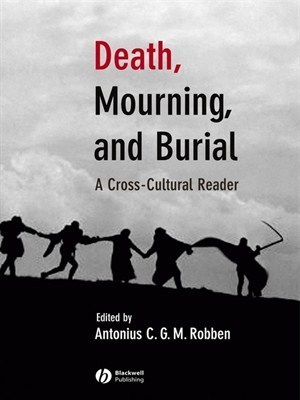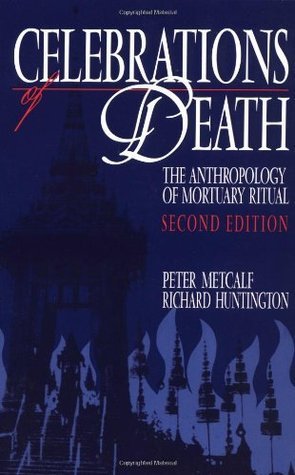Caitlin Doughty's Blog, page 42
June 18, 2014
At Last! Your Death Acceptance Reading List
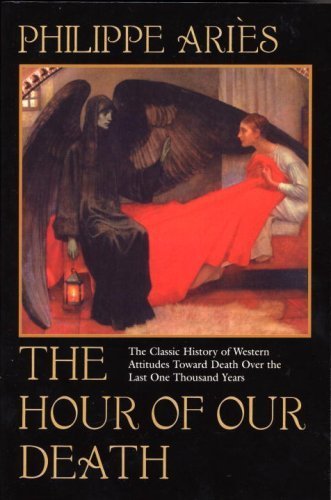
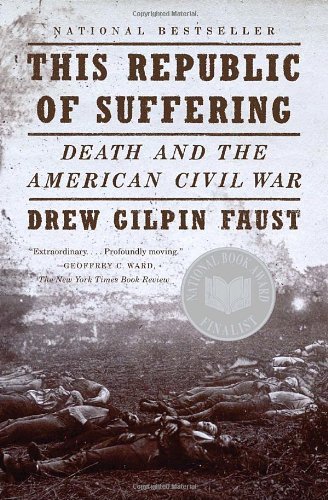
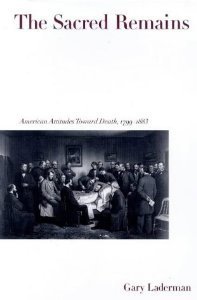
History
The Hour of Our Death: The Classic History of Western Attitudes Toward Death Over the Last One Thousand Years – Philippe Ariès
The Corpse: A History – Christine Quigley
Death in England: An Illustrated History – Edited by Peter C Jupp & Clare Gittings
Death, Religion and the Family in England, 1480—1750 – Ralph Houlbrooke
This Republic of Suffering: Death and the American Civil War – Drew Gilpin Faust
The Sacred Remains: American Attitudes Toward Death, 1799-1883 – Gary Laderman
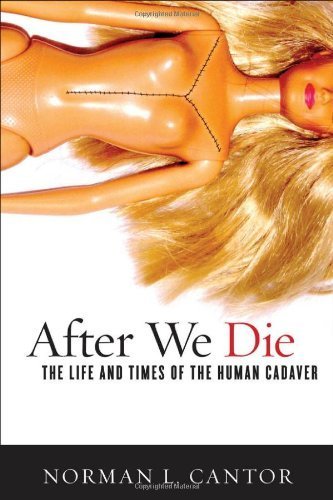
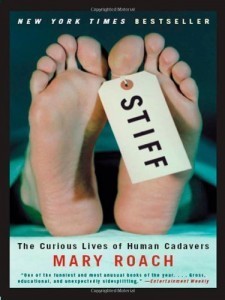
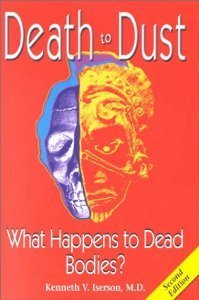
Science & Medicine
After We Die: The Life and Times of the Human Cadaver – Norman L. Cantor
Death to Dust: What Happens to Dead Bodies? – Kenneth V. Iserson
Stiff: The Curious Lives of Human Cadavers – Mary Roach
The Rethinking Mortality series at the New York Academy of Sciences, 2013-2014.
Letting Go: What Should Medicine Do When It Can’t Save Your Life? (The New Yorker)
Sociology & Anthropology
Death, Mourning, and Burial: A Cross-Cultural Reader – Edited by Antonius C. G. M. Robben
Celebrations of Death: The Anthropology of Mortuary Ritual – Peter Metcalf and Richard Huntington
Funeral Festivals in America – Jacqueline S. Thursby
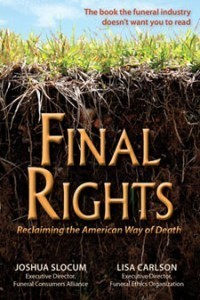

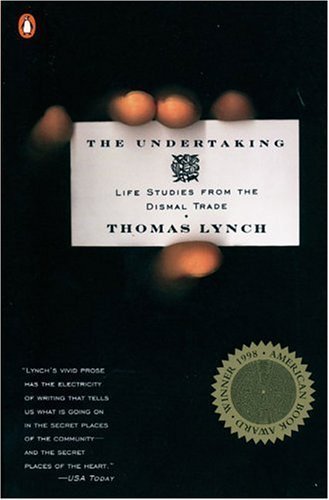
The Funeral Industry
The American Way of Death – Jessica Mitford
Final Rights: Reclaiming the American Way of Death – Joshua Slocum and Lisa Carlson
Rest in Peace: A Cultural History of Death and the Funeral Home in Twentieth-Century America – Gary Laderman
The Undertaking: Life Studies from the Dismal Trade – Thomas Lynch
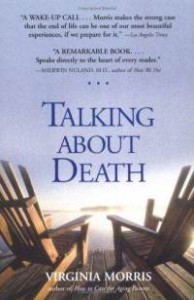
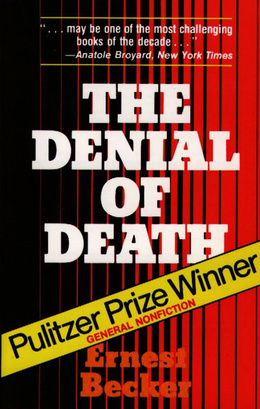

Facing Your Mortality
The Denial of Death – Ernest Becker
Staring at the Sun: Overcoming the Terror of Death – Irvin D. Yalom
Talking about Death – Virginia Morris
Thinking about Death Can Make You Value Life More – Nathan Heflick
Ask a Mortician / Order of the Good Death Youtube Channel
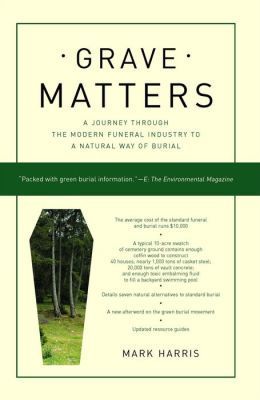

Green Death
Grave Matters: A Journey Through the Modern Funeral Industry to a Natural Way of Burial – Mark Harris
The Natural Death Handbook – Natural Death Centre
Grave Danger: The Emergence of the Sustainable Death Movement (GOOD Magazine)
The Greenest Things to Do With Your Body After You Die (The Atlantic)
DIY Death: Natural, At-Home Funerals And Their Boomer Appeal (WBUR)
Death & Youth
Carry On & A Fashionable Death (Rookie Mag) – Esme B.
Thinking About Dying Will Change Your Life (Rookie Mag) – Danielle
Children’s Books about Death (A list from National Association for the Education of Young Children)
Books to Help You Explain Death to Children (A list from Aha! Parenting)
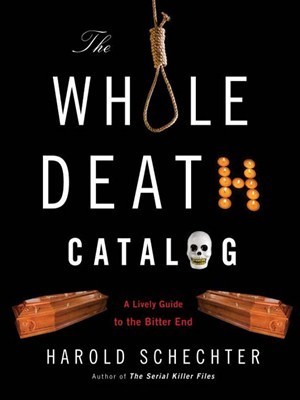
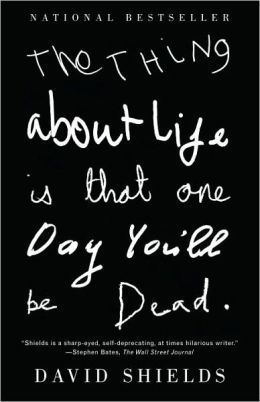

Death in General
The Thing About Life Is That One Day You’ll Be Dead – David Shields
Speaking of Death: America’s New Sense of Mortality – Michael K. Bartalos
Thinking Clearly About Death – Jay F. Rosenberg
Whole Death Catalog – Harold Schechter
Handbook of Death and Dying – Edited by Clifton D. Bryant
Encyclopedia of Death: Myth, History, Philosophy, Science—The Many Aspects of Death and Dying – Beatrice Kastenbaum and Robert Kastenbaum
The Death Class: A True Story About Life – Erika Hayasaki
Photography
Dissection: Photographs of a Rite of Passage in American Medicine, 1880-1930 – John Warner
Sleeping Beauty: Memorial Photography in America (and Sleeping Beauty II and III) – The Burns Archive


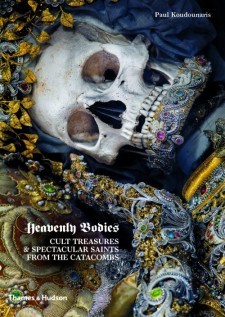
Books and Articles by Order of the Good Death Members
Cranioklepty: Grave Robbing and the Search for Genius & Afterlives of the Saints: Stories from the Ends of Faith – Colin Dickey
The Morbid Anatomy Anthology – Edited by Colin Dickey and Joanna Ebenstein
Smoke Gets in Your Eyes: And Other Lessons from the Crematory – Caitlin Doughty
The Mummies of Mexico City (Atlas Obscura) – Elizabeth Harper
The Empire of Death: A Cultural History of Ossuaries and Charnel Houses & Heavenly Bodies: Cult Treasures and Spectacular Saints from the Catacombs – Paul Koudounaris
Rest in Pieces: The Curious Fates of Famous Corpses & Fond Farewells: A Reconsideration of the American Way of Death (Lapham’s Quarterly) – Bess Lovejoy
Stayin’ Alive (Lapham’s Quarterly) & Let’s Talk About Death, Says Medical Librarian Donating Her Corpse to Science (WHYY’s The Pulse) – Megan Rosenbloom
June 5, 2014
The (Not Really So Very) Incorrupt Corpses

Anna Maria Taigi, psst not really incorrupt. Photo by author.
People ask me about incorrupt corpses at parties. I think that’s probably why I’m an Order member now. After a drink or two, some nice, normal person will pull me aside and ask me about an incorrupt saint they saw on vacation. Usually they were touring some gorgeous old church in Europe when they noticed a musty old corpse on display in between the Caravaggios and gilded putti. The guidebook said it was an incorrupt saint whose body never decomposed, but it sure looked a little… off.
By the time they start describing the saint’s waxy skin or shriveled hands, I see them start to study me. They hesitate. They look for confirmation that I’m a skeptic before they go on. When they saw the body, they knew it was a holy thing but right now the only words coming to mind would also describe a sideshow freak. Fortunately they don’t need to worry about me. I’m not going to hit anyone’s knuckles with a ruler for a little irreverence. I’m excited people are interested in this stuff. But I do think that the impulse to judge incorruptibles as simply real or fake is a fear-based response. If there’s a sucker born every minute, no one really wants to think it might be them so people approach the glass casket automatically looking for a con job.
What I can tell you from my own experience is that it helps to leave that fear of being a sucker behind for a minute. I’m not saying that you have to be a true believer to understand incorruptibility, but it helps to approach these bodies knowing that the people who care for them and interact with them aren’t carnival barkers trying to put one over on you or chumps worshiping fakes straight out of Madame Tussaud’s.

Author and Paula Fassinetti.
One of the problems is that most people judge these bodies based on photos or one quick viewing. Not many people get a chance to talk to the people who know the bodies best. The picture at the top is St. Paula Frassinetti and I. My tour guide that day was a nun at the convent St. Paula founded. She was also the one who insisted we take this picture. (I’m normally anti-corpse-selfie.) She was very open about the history of the body so there wasn’t any denial about its current condition or past treatments. Yep, incorruptibles get treatments (like a corpse spa) and it’s no big secret.

More St. Paula
Now obviously St. Paula doesn’t look incorrupt anymore. The period when she truly didn’t show any signs of decay ended shortly after she was moved to a new tomb in the convent’s chapel, about twenty-four years after her death. After that, her body began to deteriorate so acid was applied to help preserve her. That wound up marring her skin, but at least left St. Paula intact so the nuns could continue to display her.
As you’ll see, this is a pretty typical case of incorruptibility. My guide went on to tell me that one time the convent’s handyman moved the saint’s body and she was able to see that it was still flexible. Interestingly, “flexible” is probably the most common word associated with incorrupt corpses, not “lifelike”. At its core, incorruptibility only means that the body was left in a state that should have lead to putrification, or the liquefaction of guts, but didn’t. It happens without a scientific explanation so embalmed bodies, mummies, cases of human saponification, and bog bodies are out. There’s also partial incorruptibility, where some organs putrefy and others, usually the obviously symbolic ones, don’t- like St. Vincent de Paul’s heart.
The fact that incorruptibility hinges on putrification is particularly significant if you remember the putridarium. If rotting in the parish crypt was a big metaphor for punishment in purgatory, incorrupt saints seem to say, “Thanks but we don’t need any time in purgatory. We’re literally all good.” That’s why St. Paula’s order is so eager to preserve and display her body. Just like public ossuaries, incorrupt saints are seen as physical manifestations of souls in heaven. But like icons and relics, the bodies are only miraculous in the sense that miracles are attributed to their veneration. According to Church doctrine, incorruptibility alone can’t be counted as a miracle anymore. More sophisticated scientific explanations as well as mistakes found in hundreds of years of preservation records have forced the Church to reconsider which saints deserved the title in the first place. But even if it’s not miraculous, incorruptibility won’t seem to, well, rot away.

Francesca Romana, photo by author
When a body is exhumed like St. Paula’s was, it’s usually because sainthood seems likely and the church wants to move the body to a more prominent place. During the move, clergy members inspect the remains to make sure they have the right person and maybe cut off a few piece to use as portable relics. This is how most incorruptibles are found. At the time of inspection, an incorrupt corpse is expected to be pliable and whole and look more or less like the day it was buried despite any damage to its shroud, burial clothes or coffin. A lot of times you’ll hear reports of a sweet floral smell coming from the corpse called the odor of sanctity. In some cases, the condition of the body is actually said to improve. The massive axe wound that killed St. Josaphat allegedly healed after his death. But what’s confusing is that even if the body is deemed incorrupt, the pristine state it’s in during the inspection usually isn’t permanent.
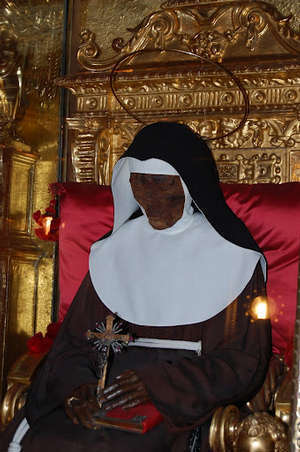
Catherine of Bologna, Catholic.org
In the past, deterioration of incorrupt corpses could be attributed to exposing the body to bad air. According to a team of modern paleopathologists from the University of Pisa, that’s actually not too far from the truth. With the Vatican’s support, the team studied microenviornments in the former tombs of incorrupt corpses. They discovered that small differences in temperature, moisture, and construction techniques lead to some tombs producing naturally preserved bodies while others in the same church didn’t. Now you can debate God’s role in choosing which bodies went into which tombs before these differences were known, but I’m going to stick with the corpses. Once the incorrupt bodies were removed from these climates or if the climates changed, they deteriorated. This may have been what happened to St. Francesca Romana who was deemed incorrupt four months after her death in 1440 only to be found fully skeletonized in 1698 (though you still hear people refer to her as incorrupt).
Human interference factors into the decay of incorruptibles as well. St. Catherine of Bologna’s skin turned black from all the candles and oil lamps burning in her shrine. It’s also pretty common to hear about people trying to preserve a corpse’s incorrupt state, only to have it backfire. While St. Paula survived her acid bath in one piece, St. Julian Eymard’s body was accidentally destroyed by a similar treatment using carbolic acid. What’s left of him is now encased in a completely terrifying wax effigy that shows him wide-awake inside a casket.

Julian Eymard
The use of wax as an artist’s medium invites even more confusion and misunderstanding when it comes to the incorrupt. There are thousands of wax effigies in Catholic churches. Some have relics inside them, others don’t, and maybe a few hundred are fully incorrupt corpses wearing wax masks. (The Vatican doesn’t take roll call so no one knows how many incorrupt saints there are in the world.) The style of waxwork ranges from detailed portraits like the one on Blessed Anna Maria Taigi to more minimalist, monochromatic coverings. Unless you know who’s who, it can be impossible to tell effigies from bodies.

St. Celia
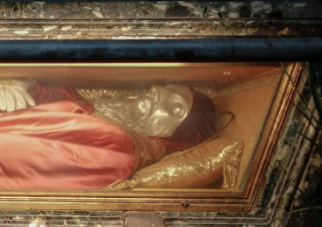
Pope Pius V
In other cases, the coverings are more obvious. You’ll see masks made of metal, like this one worn by Pope St. Pius V or saints entombed and represented by a sculpture showing how they were found, like this famous one of St. Cecelia. Conceptually, these covers are the same as wax masks. It’s just that wax mimics flesh so well that portraiture gets conflated with trickery particularly in churches that don’t have much information available.
But seriously, no one is trying to trick you or pretend that these bodies look like they just laid down for a nap. So go ahead, describe that incorrupt corpse as wax-covered or mummified. It’s cool. In fact, you might be surprised by how much skeptics would agree with the little old nuns who live with them, at least when it comes to the physical corpses.
Sources:
Christian Mummification: An Interpretative History of the Preservation of Saints, Martyrs and Others by Ken Jeremiah
The Mummy Congress: Science, Obsession, and the Everlasting Dead by Heather Pringle
The Incorruptibles by Joan Carroll Cruz
June 2, 2014
Real American Death Hero: Tyrone Muhammad
 When Tyrone Muhammad recently wrote on his Facebook wall, “Tired of embalming so many young people it’s sickening. I wish you all could see my world,” he was commenting on something that most know frighteningly little about: the epidemic of homicide among black males under the age of 25.
When Tyrone Muhammad recently wrote on his Facebook wall, “Tired of embalming so many young people it’s sickening. I wish you all could see my world,” he was commenting on something that most know frighteningly little about: the epidemic of homicide among black males under the age of 25.
It is not easy to speak out about the tragedies in one’s own community, but it’s in this uneasiness that Morticians that Care thrives. Founded by Muhammad, also known as Muhammad the Mortician, as a reaction to the violent deaths he was responsible for handling as a funeral director in Newark, NJ, Morticians that Care is an anti-violence organization that confronts the mayhem of street life with its own aggressive tactics. Driving a van wrapped in a decal of Tupac and Biggie juxtaposed with a pair of toe-tagged feet and a casket mounted to its roof is one way to spark public engagement, but it’s Muhammad’s rhetoric that fires shots directly at the most impressionable. “Swag count for nothing when you lying in a casket,” Muhammad says in one of his videos attacking the corporate hip hop culture that has made millions off of glorifying gang banging. In another video, Muhammad bitterly cuts to the chase, “The reality of it is when I see you. When I see you, it’s over.”
Speaking with Muhammad over the phone, his intensity and commitment to changing the course of young people’s lives is no less evident as it is in his videos. We began our conversation with a discussion of this.
Watching a lot of your interviews and videos, the vocabulary that you use is really intense. I think in one of the videos you get very real, talking about watching ‘blood run down a cold metal table’. How do you find that people react when you speak that way about this situation?
It’s definitely effective, because I’m giving them an inside picture of what goes on. People typically come to see [the dead] laying in a peaceful kind of state, so I try to give them what it is behind the scenes at the funeral home, the incisions; the viscera is in one place and blood is running down the table, so its graphic in nature and it gets the people’s attention 100%.

How do you think that the fantasy of a funeral has played into this lie about what death really is- is it keeping a disconnect in the community?
Most people have a warped mentality. They play video games or whatever and they shoot a person and that person gets up. Or it’s set in a TV fantasy land. I think that could be a part of it.
At the end of the day they think its kinda cool. This sounds crazy to think you wanna see how many people is gonna come to your funeral, but the deceased isn’t gonna realize that they’re no longer present-they can’t tell. But it seems like that’s the new cool fad. The funeral is a place of mourning-but it’s not. It’s a place where a bunch of young people get together and kinda,-how do I say-celebrate, but the celebration is not…it’s like cool; it’s like a passage to manhood, for lack of a better word.
We have to be so careful. Yeah-its celebration of life, but let’s not gets carried away-this is not something to celebrate.
That is correct I agree with you.
You also speak a lot about the affordability of funerals. You make an interesting point that people don’t always consider-especially young people-that it puts a hardship on families when they have to come up with money to have a funeral.
Absolutely. I mean you need to understand, the community that we serve or the funeral home serves-we have three funeral homes- we have a funeral home in a middle class section where the price is just affordable most of the time. At the funeral home that I am at, we service people in the lower income.
So for a lot of people that’s getting murdered, the mothers just don’t have the money. Most of the time it is the mother that’s present. The father may be present, but it’s the mother-the suffering, poor mother-who was working two or three jobs to provide for a child. They don’t have that much money to pay they bills as it is, you know? It’s the rent, utilities bills, etc. and now you asking them to come up with five or six thousand dollars in the four or five days.
I don’t think these young people have a clue in the hardship that they parents is gonna endure. Because I always tell ‘em when I’m speaking to them- I tell ‘em that you know that if your mother is kinda on the borderline of being an alcoholic-some will say they mother’s kinda do drugs or kinda drink-but she’s on the border line. By if your life is being taken or your taking someone else’s life? It’s not just gonna affect your life, it’s gonna affect your loved ones.
The choices that you make doesn’t really lie directly on you; it has a great impact on other people. The state of New Jersey will give four or five thousand dollars to help them out with the Victims of Crimes Compensation Office. If it really weren’t for that agency, a lot of these families wouldn’t have no one to bury their children. Their friends don’t help ‘em out at all.
 You’ve been frustrated with other funeral professionals for not stepping forward. Have you seen any change in that since you’ve started?
You’ve been frustrated with other funeral professionals for not stepping forward. Have you seen any change in that since you’ve started?
Well, no. But you gotta understand the beautiful thing about it- the way God has put it right now for me is I’m able to get an insight into what people are doing around the country. Look at the videos, Facebook, YouTube; hundreds and thousands of people are getting to hear you 24 hrs/7days a week. That’s the beauty, because so many people got a story to tell.
But the funeral homes in my area…they’re terrible. They not doing anything. They may come out for one big rally or something like that, but for the most part its real sad. It’s sad, disgusting. Because I have to say if this had gone on in any other ethnic community it would be a more… it would be an outrage.

Unfortunately, young black people being killed appears to be a big part of your business, is that true?
Yeah, it’s a contributing part of it absolutely. If you say that you get 150 victims, 150 to 200 murders right in your county-and we have three major funeral homes in my city that pretty much everyone goes to-so you gotta figure, I mean we’re profiting really good off of every one of them and also its a form of advertisement, too. Because you know the better you can patch up a bullet hole the more people wanna come to you.
You hear ‘em at the casket saying ‘Wow! Where- where’d he get shot at?!’
[The bullet wound] is right there but we in the business know that the cold cream, wax, hot heat maybe a little bit to smooth it out, put the makeup on top of it- looks very nice. But they be like, ‘Wow, man that’s where I wanna come when I get shot!’
I mean you hear young people talking like that, you know? So yes, there’s a lot of violence that takes place here.
When I look at the people who sit here and talk to me, I mean this violence is going on in so many other urban communities, it’s staggering. As a funeral director, I come from behind the scenes. I blast on the scene because you can just sit there and get fed up or you start the conversation and dialogue.
It’s a tough position to be in. Do you feel like people look at you like a hypocrite because you’re getting paid? How do you respond to that?
Well, people that know me know I’m not a hypocrite, but they can say that funeral homes are hypocritical. What made me became a mortician was another mortician was very hypocritical when I was burying my mother. But I mean, they know I’m real. We have funerals at our funeral home or church. When it’s time for remarks I’ll go up and talk.
I deal real with ‘em. I present them with actual facts. I tell ‘em we don’t want these type of deaths, I don’t care anything about your money, I’m just here to tell you the truth, let’s cut the violence down.
Now, the word hypocrite can apply to the funeral director because they’re supposed to comfort you, console you and care about you but bottom line- if you don’t have the money, well then they care nothing really about you. That’s what I’m seeing in this profession. They don’t care anything about these people who have passed on violently if they don’t have that money. But if they have that money, they treat ‘em like royalty.
 Maybe another reason we don’t see funeral professionals get socially or politically active is because they don’t want to lose customers?
Maybe another reason we don’t see funeral professionals get socially or politically active is because they don’t want to lose customers?
Yes, it is a business and certainly we’re in business for profit. We’re in business to make money, we all know that everyone has to pass away, but we don’t want these types of death. We don’t want so many deaths of our young men.
Me in particular, being a black man, we see so many black young men come into our funeral home butchered and gutted; brain, organs- all of that are gone. Well, it’s in the garbage bag or plastic bag put back in your stomach. We can’t just look at death as death- it’s very profitable all the way around because a lot of people are profiting from the deaths of young black men. And it’s tragic that we have a lot of people that have a voice on national scale that could try to bring a dialogue to this but they’re doing nothing.
We need the black funeral directors, black morticians to take effect on it. So I mean, we can’t expect the white community, we can’t expect other communities, to speak out on this. They should, but it’s our obligation to speak out on it as black people.
Do you think that they don’t want to be associated with such a violent outcome of their people?
Well from a funeral director, listen-they’re desensitized. They don’t have feelings one way or another. If you’re not emotionally attached to your cause, to your purpose, your passion…my passion is that I love my community; I love my history. I love our legacy, I’m a voracious reader, I study up on the past of who we were and who we are and to see that being destroyed by us and seeing people in the same capacity that I’m in, particularly as a funeral director, we see people-our people-at their lowest point.
You not speaking out on it, you desensitized. You don’t care nothing about it. My colleagues say I’m too caught up in it, they say ‘listen-this is business, man’. See what I’m saying? But [other black funeral directors] don’t understand the great impact that they have.
It’s been almost ten years since your started your mission. What are some positive things you can point to as effective?
Throughout the years, I was just staying in North New Jersey. Now we got the van with the casket mounted on top. I can’t tell you the schools and the mothers… I think that’s the fuel that I need because they see me out there, they see us out there for years, they come and say, ‘Mr. Muhammad, my son saw you out there with the casket. You were talking and it really hit home for them.’ And as of lately, with the posting of these videos and Facebook and it just went viral, I really get that even more.
People’s lives have been saved. In fact, just six days ago they were having a men’s service and one man’s brother was murdered and he wanted to go and retaliate, but he could never find the guy. But then I showed my video, “The Aftermath of Being about That Life”, he said, “Man, after I watch that video…” the young man- he forgave the man and he gave his life to Christ. So listen, that right there alone lets me know man, that’s what it’s about right there. And I know it wasn’t just that one, what I do affects hundreds of people I may not even know about. I’m getting text messages, emails, 24 hours a day. They telling me the tremendous impact that I’m doing. So everything is just like dropping a little pebble in the water and how it’s creating a big waterfall further down.

Do you have a schedule of when you do your mission work?
We have an organization here called Newark Anti Violence Coalition that goes out every Wednesday. I try to go out with them as much as I can. But for me personally, when the weather breaks, like this month or next month coming up, I’m in the field all the time. But now with the video- we got a video camera on board now- like tonight, I was on the video tape just sitting at my house just talking about funeral directors, really. I was really gonna go hard at the funeral directors tonight and put it on YouTube.
But I think this year actually is going to be a really, really powerful year for Mohammed the Mortician, that’s the brand and Morticians That Care, the organization. It’s going to be a powerful year because the videos have been viral and the people are responding. The people want me there. I gotta go to Baltimore, MD and that’s in May. I gotta go to Patterson. I mean I’m always speaking somewhere. I gotta speak at a church. North Carolina. Arkansas wants me. California. Florida. I mean they want me everywhere. See what I’m saying? It’s not about me- it’s really the message. Someone had to stand up and it just so happened to be a funeral director so everyone is jumping on board.
They didn’t care who stood up but someone is standing up, speaking up and trying to keep our babies out of the casket. That’s our whole goal: to keep our young people out of the casket. So I gotta do what I gotta do to keep our young people out of the casket.
So if I gotta show-with the permission of a family-[a body] with the head, with the skull open? When you looking inside the circle of Willis, with the brain removed, giving you shock value, showing you the Y-incision, and what it look like open up with the viscera and the viscera removed? Yeah, I’m gonna do what I gotta do, because right now that’s the state of urgency that we’re in. That’s where we’re at right now.
There is a lot to think about within funeral service. There are all these ‘issues’ that get raised. When I read articles about the funeral industry or funeral homes it’s always about personalization or the aging population , but then I read profiles of funeral homes dealing with the epidemic of the young people-it’s such a stark contrast of what the real issues are. I wonder, as a funeral professional, what we can do to think about that.
Well, that’s a very good question and to answer this question-sometimes to answer it could be kind of, I don’t know, very sensitive. It may hurt some feelings because we’re really dealing with race in a sense. White funerals with aging, that’s a normal process, that’s no issue. Young black men are being murdered, I personally think it’s a conspiracy to destroy black men, black young males in particular and this has been going on for years and it has been perfected now.
This is a deeper issue. Black on black violence is a real deep issue. Because if you deal with that, you’re gonna have to deal with some uncomfortable talk and that’s gonna be dealing with race talk. That’s my honest opinion.
May 8, 2014
The Dreaded Purple Cow of Death

Hi Guys
A child in the Western world will inherit a cultural legacy of death suppression and denial. Death is threatening, right? So it stands to reason that denying it would be a rather comfy way to live. And yet, studies have shown that trying to suppress thoughts of death will only make them more prevalent.
Social psychologist Daniel Wegner’s “Ironic Process Theory” proceeds like so: Starting right now, you are absolutely not to think about a purple cow. Under no circumstances should you think about a purple cow.
I’ll wait.
…..
…..
So what are you thinking about, sucker?
Chances are it’s a queerly-hued bovine. You might even be obsessing about the purple cow.
The same goes for: you are absolutely not to think about death. Death is not safe. It’s morbid, pathological. Do not dwell. Push it away. But what, knowing what we know of the purple cow, are you most likely to obsess over?
It is well known that bereaved or traumatized people who try to avoid grief take the longest to recover. In many ways, the universal experience of a child discovering that everything will die someday is its own kind of trauma. Since addressing it is forbidden, it becomes a trauma from which we’re never really allowed to recover.

In our psyche, death is like a bomb sitting in the center of the room. We can face the bomb head on, and move forward with the hard work required to diffuse it. Or we can cover it up with some sassy throw pillows and pretend its a couch. But it will never be a couch. It will always be a bomb, unpredictable in its explosion.
We should know by now that death thought suppression doesn’t work. Science supports that. Society supports that. It is only by realistic interaction with death that we will be able to moooo-ve forward as a culture. Mooooo-ve forward. That’s a cow reference. Get it? Yeah, I don’t think I should be allowed to write blogs, either.
May 4, 2014
That Precious Time: Present With the Dead Body

One morning, my partner Kurt looked into our field and saw a black horse that wasn’t there. The horse looked just like our neighbor Jeremy Frith’s horse, and turned out to be a harbinger of his impending death.
A week earlier, Jeremy had been admitted to the emergency department due to concerns about his heart, but after EKG and blood pressure analysis his mind was put at ease. He was told that with a little bed rest he’d be just fine.
Tuesday morning I was outside shoveling around the hay trailer. Cheryl stopped in to tell us that she had just seen a number of emergency response vehicles at the Frith’s Mountain Meadow Farm. Just then Kurt came out of the house saying that another neighbour had called to share the sad news that indeed Jeremy had died. We fumbled to collect what we needed to go up the road.
People were gathered in the driveway in shock. I went into the house, suspecting that Jeremy’s body had already been removed by the first responders, who must have tried to rush him to the hospital. My intention was to offer support to his wife Sue.
To my surprise, there on their bedroom floor lay Jeremy – his head cradled in Sue’s lap. He was still warm, only recently pronounced dead. He looked wonderful (if slightly pale). There was nothing grotesque about his appearance at all. In fact my thought at that moment was, “how can someone who looks so strong and healthy be dead?” My impulse was to go closer to touch him.

Jeremy & Sue
Medical personnel were still around and since the death was unexpected, the police were conducting an investigation. It was difficult to witness Sue’s experience, but I refused to comply with those who conspired to “protect her” by insisting that she come downstairs to the living room for tea. Instead I chose to hold space for what was naturally unfolding.
Sue’s world was turned upside down, and she fretted about what would become of the farm, their animals, their gardens and herself. I sat down with her and Jeremy both, and said that all she had to think about right now was that this was the last chance she’d ever have to be with Jeremy’s body. When Sue was given permission to spend that time in any way that felt right for her, she opened to the experience so fully, and with such love, that being in their presence was an honour that I will never forget.
The local minister and I nodded at one another as we watched Sue communicate with Jeremy rather than about him. As a grief counselor, I recognized the important grief work that was being done. She looked into his face and imagined his answers to questions. “Do you know how much I love you?” She was holding his body as she made the difficult phone calls to tell his sons about their dad’s death.
 Hours passed. Sue did everything a person could with that precious time. She agreed with the medical examiner that Jeremy must have an autopsy to try to attain some answers about his unexpected death, and by the time his remains were removed she felt his spirit was no longer embodied. One of the women who came to take Jeremy away was excited by the closeness of the dogs Kipper and Lucy who were cuddled at his side. She said that she had not seen animals that close in many years.
Hours passed. Sue did everything a person could with that precious time. She agreed with the medical examiner that Jeremy must have an autopsy to try to attain some answers about his unexpected death, and by the time his remains were removed she felt his spirit was no longer embodied. One of the women who came to take Jeremy away was excited by the closeness of the dogs Kipper and Lucy who were cuddled at his side. She said that she had not seen animals that close in many years.
 Sue articulated that what she thought Jeremy would want- a burial at home, without embalming and without hiring professional services for anything that could be done by friends and family. It seemed like such a simple request and a perfectly natural response to the death of a farmer and poet and community activist.
Sue articulated that what she thought Jeremy would want- a burial at home, without embalming and without hiring professional services for anything that could be done by friends and family. It seemed like such a simple request and a perfectly natural response to the death of a farmer and poet and community activist.
That is how I came to embark upon a crash course in home funerals and burial here in Victoria County, Cape Breton, Nova Scotia. I can’t really recount all that was done, but I do remember that it was the DOING that felt therapeutic. I was compelled to assign anyone who said, “..if there is anything I can do,” a concrete task. That was effective and really got everyone working together in a way that would have made Jeremy proud. As a community, we made meaning of his death by cooperating to offer community centred, home based deathcare.
Friday morning Jeremy’s sons met in Halifax and went to the medical examiner’s office as well as the office of vital statistics to obtain a death certificate. Friends had been sent the night before with a van to pick up Jeremy from the morgue and placed him in a coffin that had been made on Thursday by other friends in Jeremy’s own wood shop. There was a palpable sense of excitement and adventure about the whole thing which was enhanced when the medical examiner told me that her understanding of her job was affected by the fact that in her career no one had ever come to retrieve the body of someone they knew!
It was winter, and Jeremy’s coffin was placed upon two sawhorses on the farmhouse porch overnight while the community gathered for a party that might also be called a wake or a home vigil. We sang and read aloud from his collection of Uniquely Bermudian poetry.
We didn’t open the coffin because the medical examiner made us promise we wouldn’t in case we might have been traumatized by the appearance of Jeremy’s body following autopsy. That was OK. No one said they wanted to see him, but since then we have wished that we had removed his remains from the plastic body bag from the morgue so that his home burial was greener. If only I had known then what I know now about the rights of a family to care for their own.
 On Saturday morning our good ‘ol farm truck acted as a hearse and we all gathered at the community church at North River Bridge for a service. Sue had started a book at the wake in which she invited people to share thoughts and memories about Jeremy. At the service she read what my 8 year old daughter Naomi had written; “I thought about Jeremy at school today because we had our Christmas turkey dinner – and the carrots were terrible.”
On Saturday morning our good ‘ol farm truck acted as a hearse and we all gathered at the community church at North River Bridge for a service. Sue had started a book at the wake in which she invited people to share thoughts and memories about Jeremy. At the service she read what my 8 year old daughter Naomi had written; “I thought about Jeremy at school today because we had our Christmas turkey dinner – and the carrots were terrible.”
Jeremy worked his whole life so that a little girl like her would understand the difference between a fresh, locally grown, organic carrot and a “commercialized” one. Indeed, Jeremy has fed us well.
I’ll never forget the view as the coffin left the church and the white doors opened to reveal a beautiful snowstorm which was so severe that we commented; “as this story is retold over the years, surely no one will believe us!” It was nuts. Sue was lying on top of the coffin in the back of the truck for the last of many thousand drives up the Meadow Road with her husband. We couldn’t see 10 feet in front of us. The van which had been used to pick up Jeremy’s remains in Halifax slid off the road near the bottom of our horse field; ironically, right where Kurt had “seen” Jeremy’s horse 2 weeks earlier. There was congestion and even a collision- unheard of on this very remote, rural road.
 The plan was to have a home burial upon arrival, but Jeremy’s interment was postponed while everyone took shelter in the house to recuperate, and the tractor had just broken down in the process of clearing the road to get access to the grave which Sue had picked for its beautiful view of the surrounding landscape.
The plan was to have a home burial upon arrival, but Jeremy’s interment was postponed while everyone took shelter in the house to recuperate, and the tractor had just broken down in the process of clearing the road to get access to the grave which Sue had picked for its beautiful view of the surrounding landscape.
When the weather subsided a little we proceeded to graveside. The coffin was lowered and everyone gathered, singing and shoveling dirt into Jeremy’s grave with one of the many shovels we had found around the farm. We all took turns. During this process a patch of clear blue sky opened up. A bottle of whiskey was passed around and someone poured some on the ground in which Jeremy’s body now lies, near his deceased horse, also named Whiskey. Sue now tends vegetables there in addition to flowers and an Oak tree.
 I’m sad and angry about the death of a good friend. As I remember him I recall that there was a vitality to Jeremy that might have occasionally been misconstrued as arrogance, but to my way of thinking an arrogant man is closed off to change; whereas Jeremy was always wide open. I believe that he would have been open to the changes taking place in the funeral industry, and I know he would be pleased to be the one to set an example of how enriching a home funeral can be in this day and age in rural Cape Breton.
I’m sad and angry about the death of a good friend. As I remember him I recall that there was a vitality to Jeremy that might have occasionally been misconstrued as arrogance, but to my way of thinking an arrogant man is closed off to change; whereas Jeremy was always wide open. I believe that he would have been open to the changes taking place in the funeral industry, and I know he would be pleased to be the one to set an example of how enriching a home funeral can be in this day and age in rural Cape Breton.
How could I have known that his death would impact my life so! As I reflected on the events described above the only words that seemed to capture the essence of what happened related to the home birth movement. Since that time the story of Jeremy’s home based deathcare has helped to shape a burgeoning discourse called Death Midwifery in Canada which I feel honoured to be involved with.
Below is what I wrote in Jeremy’s book:
We’ve seen each other almost daily since we moved to our homestead near to his. We trade fresh goat’s milk for precious organic vegetables. Jeremy helped me to understand why there is no exchange more sacred than this.
Cassandra Yonder lives on a self-sustaining homestead in Nova Scotia, Canada. She is a practicing Death Midwife, focusing on home funerals and alternative body dispositions. Cassandra is a Canadian representative to the National Home Funeral Alliance.
Caitlin Doughty's Blog
- Caitlin Doughty's profile
- 8414 followers


